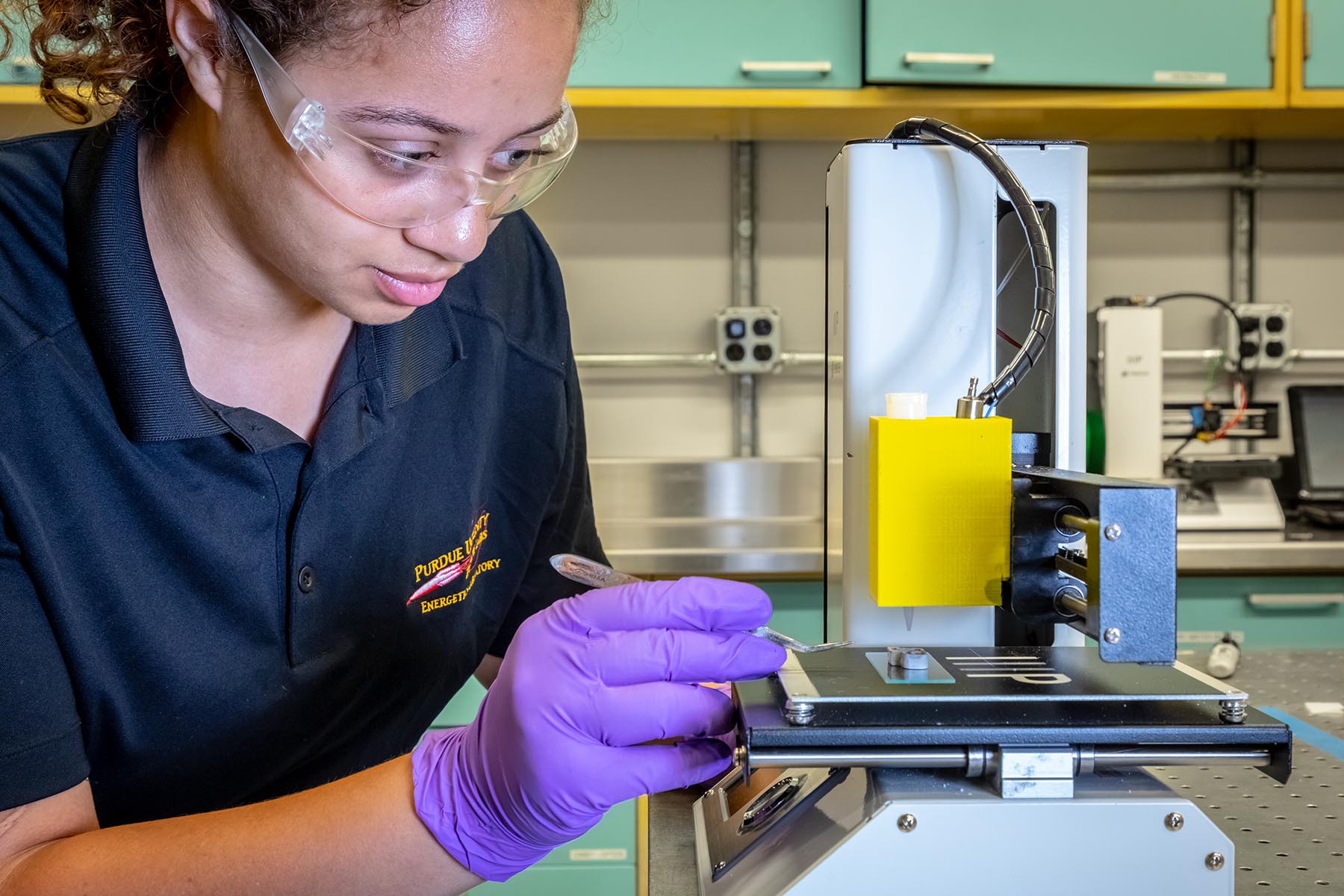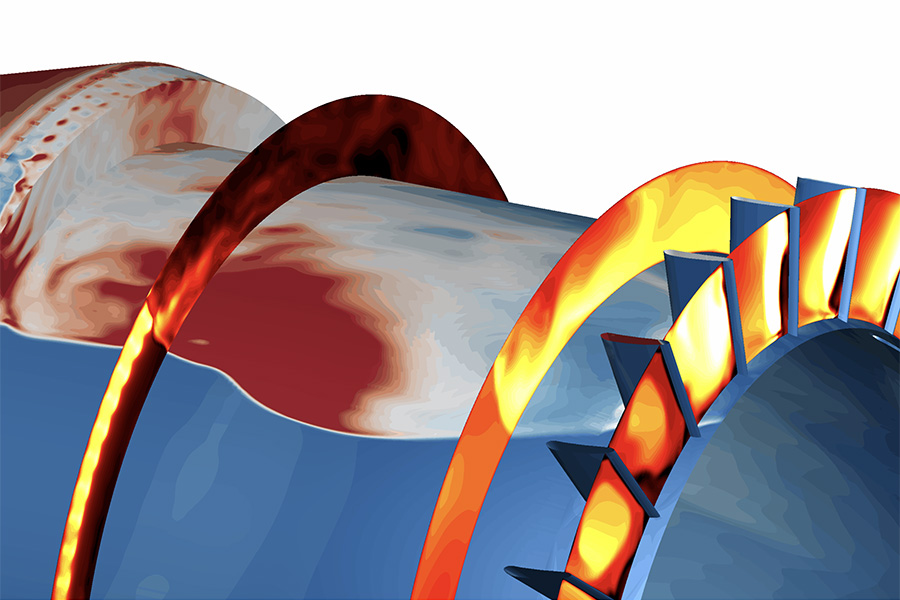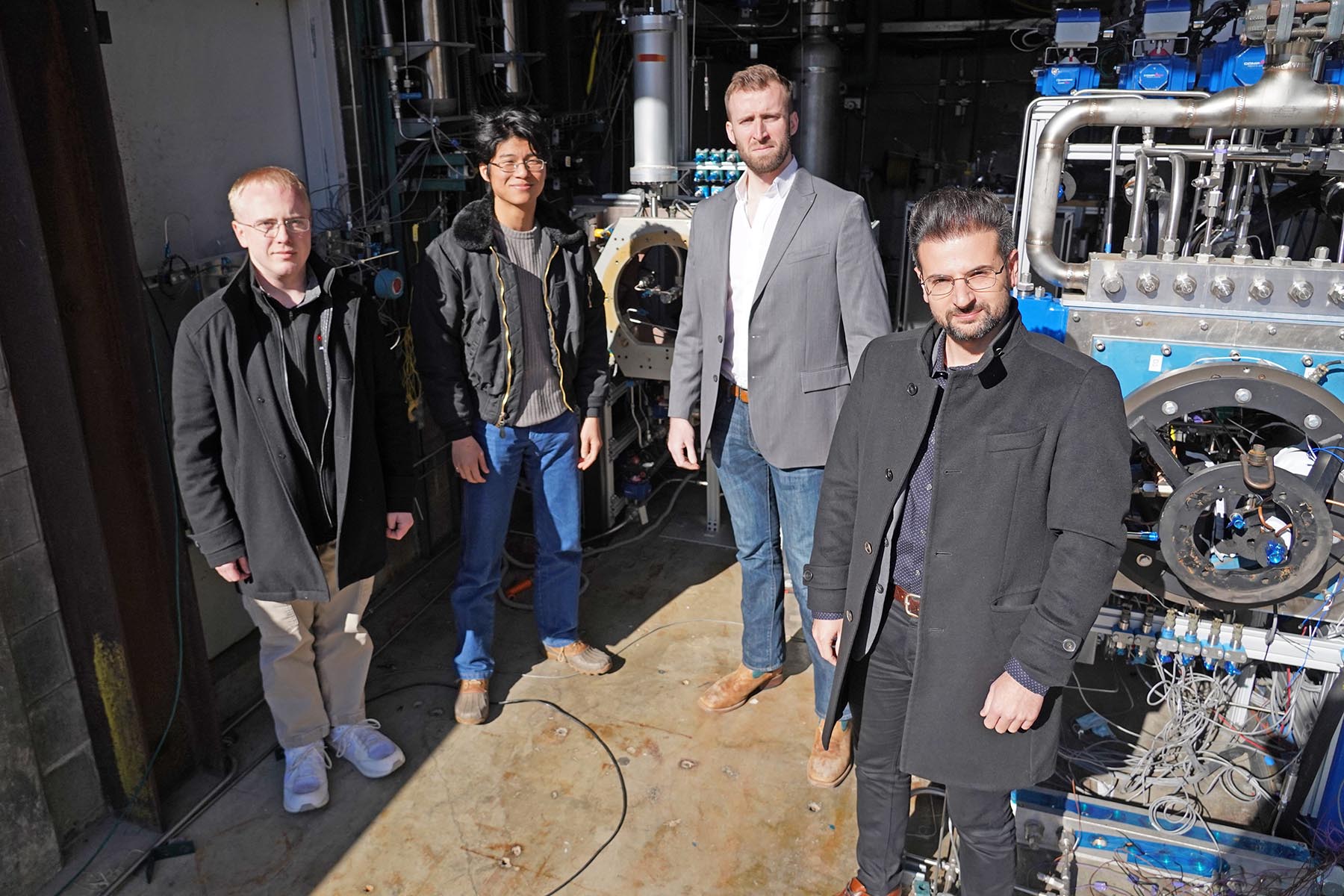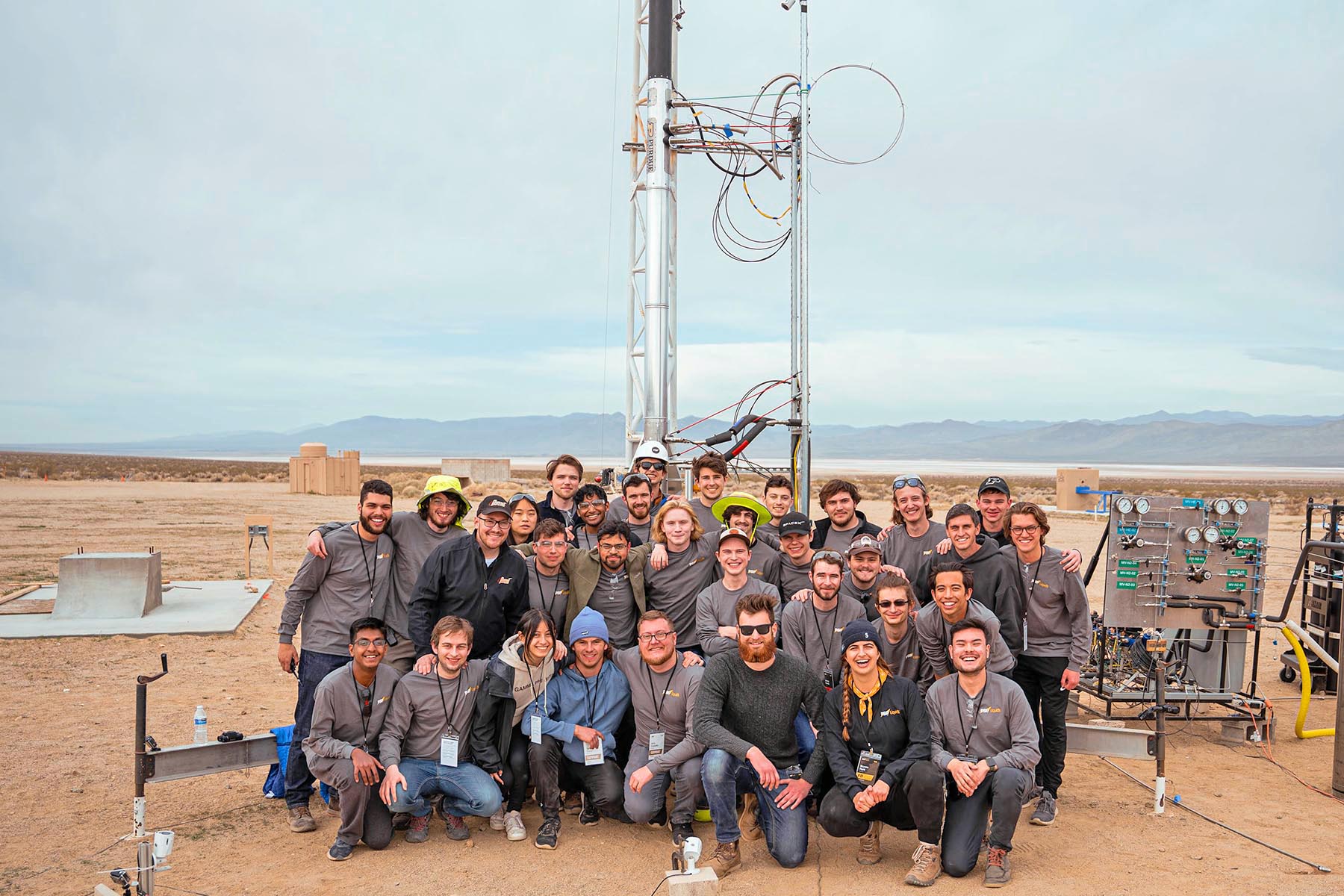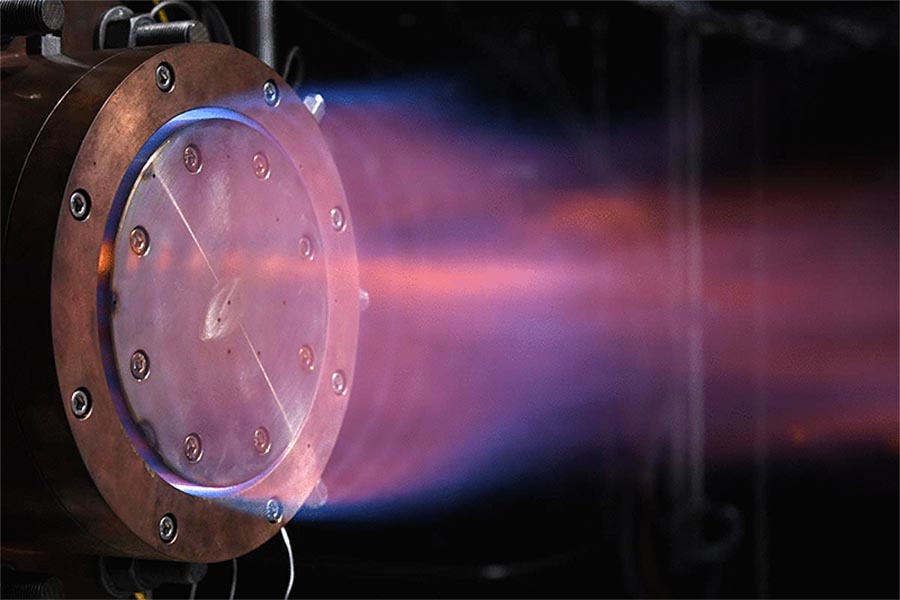Propulsion
Since 1948, Purdue researchers have set the standard for propulsion experiments. Work at Zucrow Labs led to the development of the original Space Shuttle Main Engines. Today, new technologies allow propellants, combustors, and rocket engines to be conceived, constructed, and tested with unprecedented accuracy. With the blossoming private space industry, Purdue propulsion engineers are in high demand.
Purdue's expertise also includes turbines and compressors, powering the next generation of jet engines. With an unmatched array of wind tunnels and other facilities, they are also investigating the future of hypersonics: Mach 4, Mach 6, and beyond!
Zucrow Labs is the largest academic propulsion lab in the world. Facilities include:
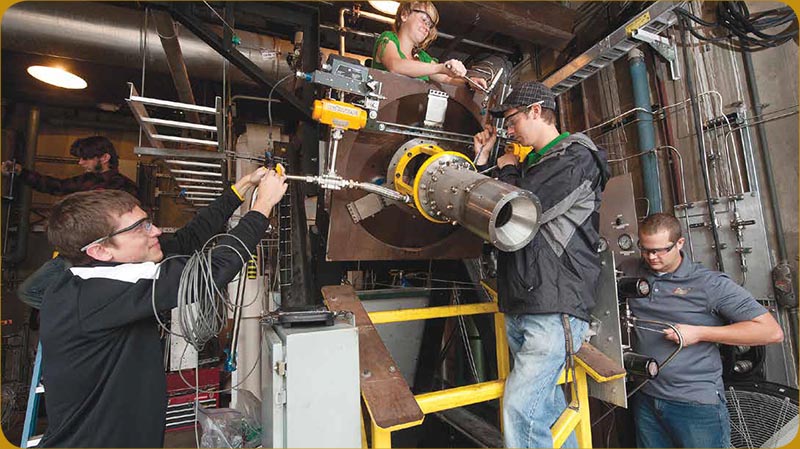
- Multiple reinforced concrete test cells with laser diagnostics
- Propellant labs with mixers, evaluation rigs, and safety equipment for remote operation
- Compressed air delivering 3300 cubic feet at 2200 psi
- Air heater, capable of testing at 1500°F at Mach 4
- On-site bulk storage and infrastructure for hydrogen, liquid oxygen, liquid nitrogen, and natural gas
- Data acquisition and storage with analog/digital sensors, high-speed cameras, and controls
More detailed info at purdue.edu/zucrow
Faculty in Propulsion
- Application Areas: Advancement of high-speed flow and propulsion systems, including high-enthalpy flow tunnels, rotating detonation engines, ramjets, high-speed gas turbine and combined cycle engines, and bench-scale supersonic flight test rigs
- Fundamental Studies: Experimental investigation and detailed understanding of multiphysics thermal-fluid transport in high-speed, turbulent, and multiphase reacting flow environments
- Measurement Specialties: Development and implementation of ultra-highspeed imaging and spectroscopy for a wide range of temperatures, pressures, fluid phases, flow velocities, chemical species, and physical states.


